If you’re having your Husqvarna Yth18542 Transmission Problems, you’re not alone. Many owners of this popular lawn tractor have reported problems with hydrostatic transmission, especially after years of use.
The most common problem is that the tractor will not move forward or backward. Other symptoms can include the tractor moving erratically or being difficult to steer. One is that the drive belt may be loose or damaged. Another is that the hydrostatic fluid may be low.
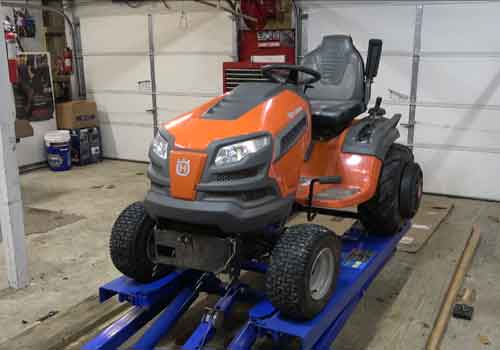
Husqvarna Yth18542 Transmission Problems
Common Husqvarna Yth18542 Transmission Problems are-
1. Leaking oil
This problem is caused by the oil pump failing to move the oil into the correct injection pressure chamber.
2. Difficulty shifting gears
This is caused by metal bits or burrs in the transmission breaking up or just jamming. To fix this problem you need to clean the inside and outside of your transmission with transmission cleaner spray and scrub brush.
3. Shifting problems
This problem happens because there is either a broken clutch or a bent transmission mount.
4. Shifting problems
This problem is caused by the throttle cable being out of adjustment or shifted due to a broken cable.
5. Clutch malfunctions
This problem is caused by the clutch failing to disengage or the clutch cable being out of adjustment.
6. Losing power
This problem is caused by a worn-out drive belt, improperly adjusted valve timing, or a hole in the cylinder head.
FIX
The First step is to identify your problem. When you have identified your problem, then start researching how to fix it and go for it.
1. Leaking oil
If this problem occurs then your unit is leaking oil; you will need to check all the gaskets, seals, and cylinder heads. If there is a leak, then you will need to replace the part.
2. Difficulty shifting gears
If this problem occurs then your unit is not shifting properly due to jamming and breaking off bits, and burrs. To fix this problem you will need to disassemble your transmission, clean it with a cleaner spray and scrub brush and also replace broken parts.
3. Shifting problems
If this problem occurs then your unit is having problems shifting gears due to bent transmission mounts or broken clutches. To fix this problem you will need to remove the transmission, replace the clutch and replace the bent mount.
4. Shifting problems
If this problem occurs then your unit is having problems shifting gears due to broken throttle cables or out-of-adjustment cables. To fix this problem you will need to check throttle cable adjustments and replace broken cables.
5. Clutch malfunctions
If this problem occurs then your unit is having problems disengaging the clutch because of a broken clutch or cable. To fix this problem you will need to replace the clutch and cable.
This problem occurs because of a worn drive belt, improperly adjusted valve timing, or a hole in the cylinder head. This problem is easily identified by using a belt tensioner to find any incorrectly seated belt teeth. To fix this problem you will need to replace your drive belt, valve timing, and cylinder head.
6. Losing power
This problem is caused by a worn-out drive belt, improperly adjusted valve timing, or a hole in the cylinder head.
To fix this problem you will need to replace your drive belt and cylinder head. If there is any leakage then you will need to replace your valve timing.
If you hear a loud noise from your unit then most probably it means that your engine mounts are worn. To fix this problem you will need to replace the engine mounts.
What Transmission is in the Husqvarna Yth18542?
The Husqvarna YTH18542 is a riding lawn mower that features a 42-inch cutting deck and an 18.5 HP Briggs & Stratton engine. This model also comes with a hydrostatic transmission, which makes it easy to operate and maintain.
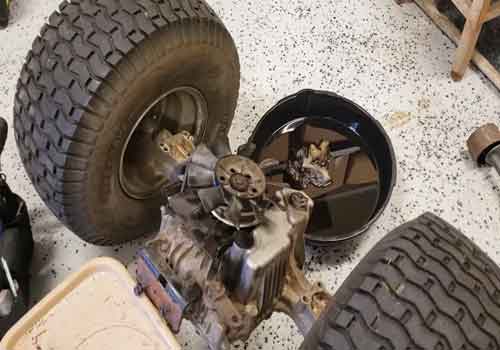
Read More About Husqvarna Locking Differential Problems
How Do I Know If My Lawn Mower Transmission is Bad?
Assuming you are referring to a riding lawn mower: There are a few telltale signs that your transmission may be going bad. For starters, if your mower is having trouble shifting gears, this is a definite sign that something is wrong.
Additionally, if your mower seems to be slipping out of gear or lurching forward unexpectedly, these are also both indicative of transmission issues.
Finally, if your lawn mower engine revs up but the blades aren’t spinning, this means that the power isn’t being properly transferred from the engine to the cutting deck – another symptom of a failing transmission.
If you notice any of these problems with your lawn mower, it’s best to take it to a professional for diagnosis and repair.
What Causes a Hydrostatic Transmission to Slip?
A hydrostatic transmission is a type of fluid-based power transmission system that uses pressurized hydraulic fluid to drive machinery.
The key advantage of a hydrostatic transmission over other types of transmissions is its ability to vary the speed and torque of a machine independently from each other. However, one disadvantage of hydrostatic transmissions is that they can slip under certain conditions.
When this happens, it’s typically due to one or more of the following causes:
1. Incorrect Fluid Level:
The most common cause of slipping in a hydrostatic transmission is an incorrect fluid level. If there’s not enough fluid in the system, it can cause the pump to cavitate (i.e., create bubbles in the liquid), which will reduce its efficiency and cause it to slip.
Conversely, if there’s too much fluid in the system, it can cause excessive wear on components and also lead to slipping.
2. Air in the System:
Another common cause of slipping is air in the system. Even a small amount of air can wreak havoc on a hydrostatic transmission, causing it to lose pressure and slip. Air can enter the system either through leaks or via the suction side of the pump (if it’s not properly sealed).
3. Worn or Damaged Components:
Worn or damaged components are another common cause of slipping in hydrostatic transmissions. In particular, worn seals and gaskets can allow leaks to develop, which can lead to loss of pressure and ultimately slipping.
Why Will My Husqvarna Mower Not Go Forward Or Reverse?
If your Husqvarna mower won’t go forward or reverse, there are a few things you can check to troubleshoot the problem. First, make sure that the transmission is in the correct position. The transmission has two positions, forward and reverse.
If it is in the wrong position, the mower will not move. Second, check the drive belt to make sure it is tight and not damaged. The drive belt connects the engine to the wheels and if it is loose or damaged, the mower will not move.
Finally, check for any debris that may be blocking the wheels or preventing them from turning. If you find anything blocking the wheels, remove it and try again.
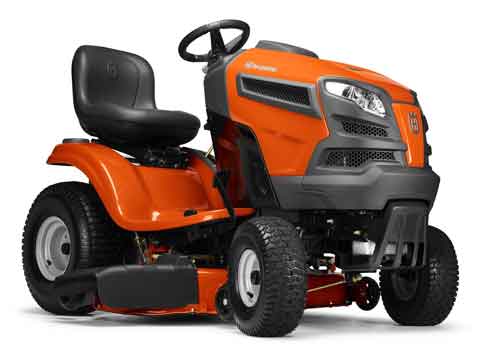
Specification
| Model | Husqvarna Yth18542 |
| Engine | 18.5HP |
| Steering | Manual steering |
| Manufacturer in | 2017 |
| Chassis | 2WD |
| Fuel Capacity | 25L |
| Weight | 419kg |
| Battery | 12V |
| Speed | 3600rpm |
| transmission | Hydrostatic |
| Fuel | Diesel |
Why is my Husqvarna yta18542 hydrostatic transmission not working?
The Husqvarna yta18542 hydrostatic transmission is the part of the tractor that provides traction and control. The yta18542 transmits power to the ground through the power take-off shaft.
This shaft allows you to attach a variety of different tools such as a mower, snow blower, or brush cutter. If your yta18542 hydrostatic transmission is not working properly it’s usually an indication that there are some serious internal problems with your machine.
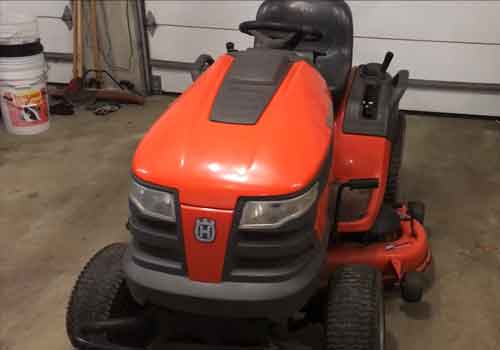
Is the Husqvarna yth18542 a good ride-on lawn mower?
Most people will have a difficult time believing an electric device can be as good as a gas-powered ride-on. But, the Husqvarna YTH18542 is a lot better than most of the popular gas models.
The first and foremost thing a consumer should know is that this machine comes with some great safety features, that can help keep you safe while using it. It has a forward-thinking approach to make sure your children are protected while they ride around on their lawnmowers.
Why does my Husqvarna lawn mower have a transmission problem?
When the transmission is damaged, you will begin to experience issues with the unit. Although it might seem complex at first, if you start by learning the basic terminology and parts, it will be easier to troubleshoot a problem.
In this article, you will discover some of the most common transmission issues that can affect your Husqvarna Lawn Mower.
How to replace the transmission on a Husqvarna lawn tractor?
In order to replace the transmission on a Husqvarna lawn mower, you will need the right tools. But, there are some basic items that can help make replacing the transmission easier.
But, before you can begin working on it, you have to have a clear idea of which transmission it is. The transmissions are either direct or hydrostatic in nature and there are also four different sizes that this model comprises.
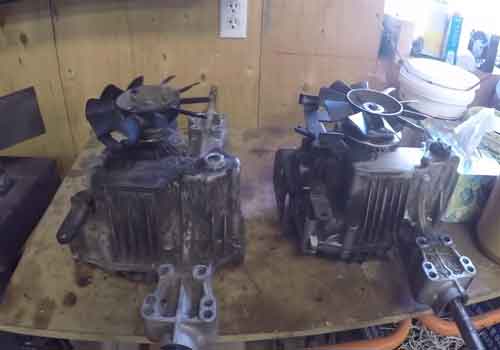
FAQ
Will an airlock clear itself?
Not clear enough to be considered a cakewalk. There are a bunch of factors that can factor into the airlock. The most important is the duration, so if you have a problem, take note of how long it takes before it starts happening again.
Do you have to bleed the air out of a hydraulic system?
Yes, you have to bleed the system if it builds up pressure while it is not in use. Usually, you can do this by simply opening the fill valve and letting it bleed out until it stops.
Hydrostatic Transmission Repair. (Part 1) TUFF TORQ (Husqvarna)
Conclusion
If you own a Husqvarna Yth18542 riding lawn mower, you may eventually have Husqvarna Yth18542 Transmission Problems.
The transmission is responsible for transferring power from the engine to the wheels, and it consists of several parts that can wear out over time. Fortunately, there are some things you can do to prevent or fix transmission problems.
One way to prevent transmission problems is to regularly check the oil level and quality. If the oil is low or dirty, it can cause the transmission to overheat and fail. You should also avoid using too much force when shifting gears, as this can damage the internal parts of the transmission.